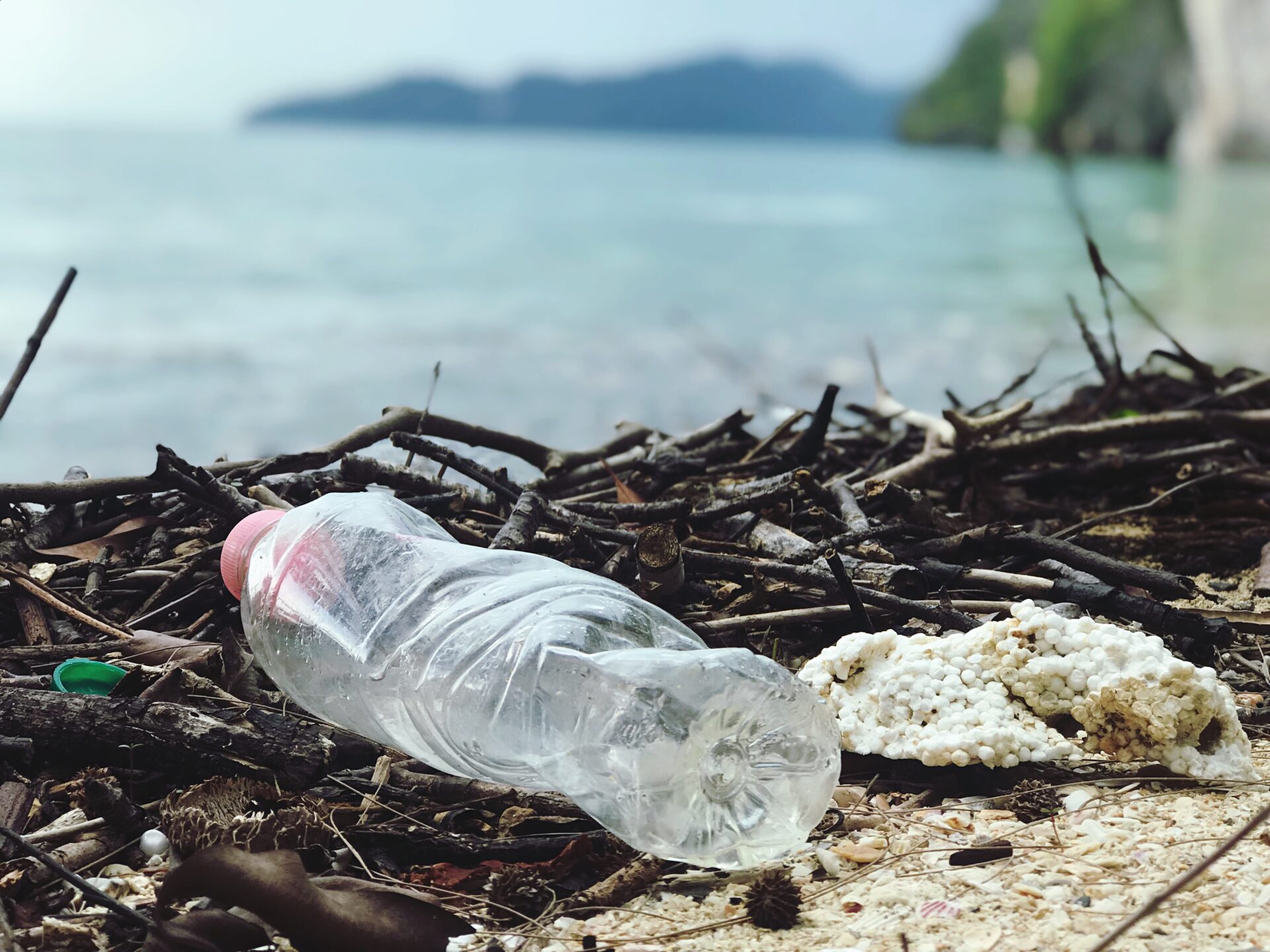In today’s rapidly evolving world, the undeniable impact of plastic pollution on our environment and ecosystems has led to a pressing need for a shift to a plastic-free lifestyle. In this comprehensive article, we will explore the indispensable role legislation plays in promoting plastic-free living. Through an in-depth analysis of existing policies and their effectiveness, we will uncover the vital connection between regulatory instruments and individual efforts in achieving a sustainable future. Furthermore, we will delve into the potential benefits and challenges that arise from implementing such legislation. Join us as we navigate the complex landscape of plastic pollution, and discover how legal frameworks can serve as powerful catalysts in our pursuit of a cleaner, greener planet.
Government Bans and Restrictions on Single-Use Plastics
As we continue to witness the detrimental effects of plastic pollution on our environment, governments around the world have taken significant steps to curb the production, consumption, and disposal of single-use plastics. In this subsection, we will examine various bans and restrictions implemented by governments to promote plastic-free living, as well as the impact of these measures on consumer behavior and industry practices.
The Rise of Plastic Bag Bans
One of the most widespread and well-known legislative efforts to reduce single-use plastics is the plastic bag ban. Countries across the globe, such as the United States, the United Kingdom, Australia, and Kenya, have introduced either complete bans, levies, or taxes on single-use plastic bags. These measures have proven to be effective in reducing plastic bag consumption and encouraging the adoption of reusable alternatives by the public.
Prohibiting Single-Use Plastic Products
In addition to plastic bags, governments have started targeting other single-use plastic products, such as straws, cutlery, and plates. The European Union, for instance, has passed legislation banning the sale of these items from 2021 onwards. Similar policies are being considered or implemented in other regions, with the aim of drastically reducing the volume of single-use plastics that end up in landfills and oceans.
Regulating Plastic Packaging and Microplastics
Another area of focus for governments is the regulation of plastic packaging and the restriction of microplastics in consumer products. Many jurisdictions have imposed stricter rules on the production and use of plastic packaging, with some even setting specific targets for reducing packaging waste. Moreover, countries like the United States, Canada, and the United Kingdom have banned the use of microbeads in personal care products, which are known to cause significant harm to marine life and ecosystems.
Encouraging Market Shifts through Legislation
Governments play a crucial role in driving market changes by implementing policies that favor eco-friendly alternatives to single-use plastics. For example, tax incentives or subsidies can be provided to companies developing sustainable packaging materials, or penalties can be imposed on those relying on non-recyclable plastics. Such measures can help create a more level playing field for environmentally responsible businesses and foster innovation in the development of sustainable materials.
In summary, the implementation of bans and restrictions on single-use plastics by governments around the world has proven to be vital in promoting plastic-free living. By targeting key areas such as plastic bags, single-use products, packaging, and microplastics, these legislative efforts have contributed to significant reductions in plastic consumption and waste generation. Furthermore, governments can incentivize market shifts towards eco-friendly alternatives by providing support for sustainable businesses and penalizing those that continue to rely on non-recyclable plastics. Together, these measures can drive meaningful change and help pave the way towards a more sustainable future.
Incentives and Tax Breaks for Eco-Friendly Alternatives
As governments around the world continue to enforce bans and restrictions on single-use plastics, it has become increasingly important to simultaneously promote the development and adoption of sustainable alternatives. In this subsection, we will explore how incentives and tax breaks can accelerate the shift towards environmentally friendly materials and products, thereby encouraging businesses and consumers to embrace plastic-free living.
Financial Incentives for Businesses Developing Sustainable Solutions
One effective approach to foster the development of eco-friendly alternatives is to provide financial incentives for businesses that invest in research and innovation in this area. This can take the form of grants, low-interest loans, or tax credits for companies that create new materials or processes that help reduce plastic waste. By offering financial support, governments can stimulate innovation and make it more feasible for businesses to invest in the development of sustainable products.
Reduced Taxes for Eco-Friendly Products and Packaging
Another way governments can promote the adoption of sustainable alternatives is by reducing taxes on eco-friendly products and packaging materials. For example, lower sales or value-added taxes can be applied to items made from biodegradable, compostable, or recyclable materials, making them more cost-competitive with traditional plastic products. This not only encourages consumers to purchase environmentally friendly options but also incentivizes companies to switch to sustainable packaging solutions.
Tax Rebates for Businesses Implementing Plastic Reduction Strategies
Businesses that commit to reducing their plastic consumption and waste generation can be rewarded with tax rebates or deductions. By implementing comprehensive plastic reduction strategies, such as using reusable packaging materials, eliminating single-use items, or participating in recycling programs, companies can demonstrate their commitment to sustainability and become eligible for tax benefits. This approach not only supports businesses in their transition to plastic-free operations but also reinforces the notion that sustainability is both a social and economic responsibility.
Subsidies for Green Infrastructure and Recycling Facilities
In order to foster a circular economy and encourage plastic-free living, it is essential to invest in the necessary infrastructure to support the recycling, reuse, and composting of materials. Governments can provide subsidies to help establish and maintain recycling facilities, composting centers, and other green infrastructure, thereby creating a more sustainable waste management system. These investments can also create new job opportunities and contribute to the overall economic growth of a region.
Overall, the implementation of incentives and tax breaks for eco-friendly alternatives can be a powerful tool in the quest for plastic-free living. By supporting businesses that develop and adopt sustainable materials and practices, governments can effectively drive market changes and encourage widespread adoption of environmentally friendly solutions. Furthermore, investments in green infrastructure and recycling facilities can help establish a more sustainable waste management system, ultimately contributing to the protection of our planet’s precious resources and ecosystems.
Extended Producer Responsibility (EPR) Policies
Extended Producer Responsibility (EPR) policies have emerged as a critical component in the effort to promote plastic-free living. By holding manufacturers and businesses accountable for the environmental impact of their products and packaging, these policies have the potential to significantly reduce plastic pollution and encourage the development of sustainable alternatives. In this subsection, we will delve into the concept of EPR, explore various EPR policies implemented worldwide, and assess the impact of these policies on plastic waste reduction and resource management.
Understanding Extended Producer Responsibility (EPR)
Extended Producer Responsibility is an environmental policy approach that assigns responsibility to producers for the entire life cycle of their products, including their end-of-life management. The primary objectives of EPR policies are to incentivize producers to design eco-friendly products and packaging, promote the efficient use of resources, and reduce waste generation. By shifting the burden of waste management from governments and taxpayers to producers, EPR policies aim to create a more sustainable and circular economy.
Implementing EPR Policies for Plastic Waste Management
Several countries have adopted EPR policies specifically targeted at addressing plastic waste. These policies typically require producers to finance the collection, sorting, and recycling of plastic packaging, as well as invest in public awareness campaigns and infrastructure development. Examples of successful EPR policies include Germany’s Green Dot program, which has led to a substantial increase in recycling rates, and France’s eco-tax on plastic packaging, which has encouraged companies to adopt more sustainable materials.
Encouraging Eco-Design and Innovation through EPR
One of the most significant benefits of EPR policies is their ability to drive innovation in product design and packaging. By imposing fees or penalties on producers that generate excessive waste or use non-recyclable materials, EPR policies encourage companies to develop more sustainable alternatives that minimize environmental impact. As a result, these policies can lead to the creation of new materials, technologies, and processes that promote plastic-free living.
Challenges and Limitations of EPR Policies
While EPR policies have shown promise in promoting plastic-free living, they are not without challenges and limitations. For instance, the implementation of EPR policies can be complex and require significant coordination among various stakeholders, including producers, consumers, and waste management operators. Additionally, there is the potential for EPR policies to create unintended consequences, such as encouraging producers to switch to alternative materials that may have negative environmental impacts of their own. To address these challenges, it is essential for governments to carefully design and monitor EPR policies to ensure their effectiveness and avoid unintended consequences.
In essence, Extended Producer Responsibility policies play a vital role in promoting plastic-free living by holding producers accountable for the environmental impact of their products and packaging. Through the implementation of EPR policies, governments can drive innovation in eco-design, promote resource efficiency, and reduce plastic waste generation. However, it is crucial to carefully design and monitor these policies to ensure their effectiveness and mitigate any potential drawbacks. By adopting well-crafted EPR policies, we can foster a more sustainable and circular economy, ultimately advancing our collective efforts towards a plastic-free future.
Public Awareness Campaigns and Educational Initiatives
As important as legislation is in promoting plastic-free living, it cannot succeed without the support and participation of the general public. Public awareness campaigns and educational initiatives play a crucial role in fostering a deeper understanding of the environmental impact of plastic pollution and driving behavioral changes towards sustainable practices. In this subsection, we will explore various types of awareness campaigns and educational initiatives, and how they contribute to the success of legislative efforts in creating a plastic-free society.
Informing the Public About the Dangers of Plastic Pollution
One of the primary objectives of public awareness campaigns is to inform people about the hazards associated with plastic pollution, both for the environment and human health. By sharing compelling visual imagery, facts, and statistics, these campaigns can effectively communicate the urgent need for action and inspire individuals to reconsider their consumption of single-use plastics. A well-informed public is more likely to support legislative measures aimed at reducing plastic waste and adopting sustainable alternatives.
Engaging Communities in Local Plastic-Free Initiatives
Community-level engagement is a vital component of any successful plastic-free living campaign. By organizing local events, workshops, and clean-up activities, communities can directly contribute to the reduction of plastic waste in their surroundings. These grassroots initiatives not only help raise awareness about the issue but also foster a sense of collective responsibility and empower individuals to take action in their daily lives. This, in turn, can strengthen public support for legislative actions aimed at curbing plastic pollution.
Educating the Next Generation on Sustainable Living
Educational initiatives targeting children and young people are essential for fostering a culture of sustainability and instilling eco-friendly values from an early age. By incorporating lessons on plastic pollution, waste reduction, and sustainable living into school curricula, educators can equip students with the knowledge and tools they need to make conscientious choices and become responsible citizens. This long-term investment in education can create a ripple effect, as students grow up to be advocates for plastic-free living and supporters of relevant legislation.
Promoting the Benefits of Plastic-Free Alternatives
In addition to raising awareness about the dangers of plastic pollution, it is equally important to highlight the benefits of plastic-free alternatives. Public campaigns and educational initiatives can showcase the advantages of using reusable, biodegradable, and compostable products, and provide practical tips on how to incorporate these alternatives into one’s daily routines. By demonstrating the feasibility and benefits of adopting plastic-free practices, these efforts can help break down resistance to change and encourage widespread adoption of sustainable habits.
Ultimately, public awareness campaigns and educational initiatives serve as indispensable complements to legislative efforts in promoting plastic-free living. By informing the public about the dangers of plastic pollution, engaging communities in local initiatives, educating the next generation, and promoting the benefits of sustainable alternatives, these campaigns can foster a culture of environmental responsibility and drive the behavioral changes necessary for the successful implementation of legislation. Together, these combined efforts can pave the way for a cleaner, greener, and more sustainable future for all.
Community-Level Regulations and Plastic-Free Initiatives
While national and international legislation plays a crucial role in promoting plastic-free living, community-level regulations and initiatives are equally essential in driving change at a grassroots level. Local authorities and community organizations can implement policies and programs tailored to the specific needs and challenges of their region, fostering a sense of collective responsibility and empowering individuals to take action. In this subsection, we will explore various community-level regulations and plastic-free initiatives, examining their impact on reducing plastic waste and supporting broader legislative efforts.
Local Bans and Restrictions on Single-Use Plastics
Many communities have taken it upon themselves to enforce bans or restrictions on single-use plastics within their jurisdictions. By targeting specific items such as plastic bags, straws, and disposable cutlery, these local regulations can yield significant reductions in plastic waste and encourage residents to adopt reusable alternatives. Moreover, the success of these community-level efforts can serve as a catalyst for broader legislative action, demonstrating the feasibility and effectiveness of such measures on a larger scale.
Zero-Waste Communities and Circular Economy Models
A growing number of communities worldwide are embracing the concept of zero waste and adopting circular economy models. These initiatives focus on reducing waste generation, maximizing resource efficiency, and promoting local recycling and composting infrastructure. By implementing community-wide waste reduction strategies and supporting local businesses that prioritize sustainability, these initiatives can contribute to a significant decrease in plastic pollution and foster an environmentally conscious culture.
Plastic-Free Certification Programs and Incentives
To incentivize residents and businesses to reduce their plastic consumption, some communities have established plastic-free certification programs and incentive schemes. These programs typically involve a set of criteria and guidelines for participants to follow, with successful applicants receiving certification or recognition as a plastic-free entity. Such initiatives not only help raise awareness about the importance of reducing plastic waste but also create a sense of healthy competition and pride among community members, further driving the adoption of plastic-free practices.
Collaborative Clean-Up Efforts and Awareness Campaigns
Local authorities and community organizations can also play a vital role in organizing clean-up events and awareness campaigns within their region. By mobilizing residents to participate in beach clean-ups, litter-picking activities, and other waste reduction efforts, these initiatives can have a direct impact on reducing plastic pollution while also raising awareness about the issue. Moreover, such activities can foster a sense of community and environmental stewardship, which is instrumental in supporting broader legislative efforts to promote plastic-free living.
Local Education and Capacity Building Programs
Lastly, communities can invest in education and capacity-building programs to equip residents with the knowledge and skills required to adopt plastic-free practices. This can include workshops, seminars, and training courses on topics such as waste management, recycling, and eco-friendly alternatives to single-use plastics. By fostering a well-informed and skilled community, these efforts can contribute to the long-term success of both local and national legislation aimed at reducing plastic pollution.
In summary, community-level regulations and plastic-free initiatives play a pivotal role in complementing broader legislative efforts to promote plastic-free living. By implementing local bans and restrictions, embracing zero-waste principles, establishing certification programs, organizing clean-up efforts, and investing in education and capacity building, communities can drive change at the grassroots level and support the successful implementation of national and international policies. Together, these combined efforts can create a powerful force for change, contributing to a cleaner, greener, and more sustainable future for all.





Leave a reply